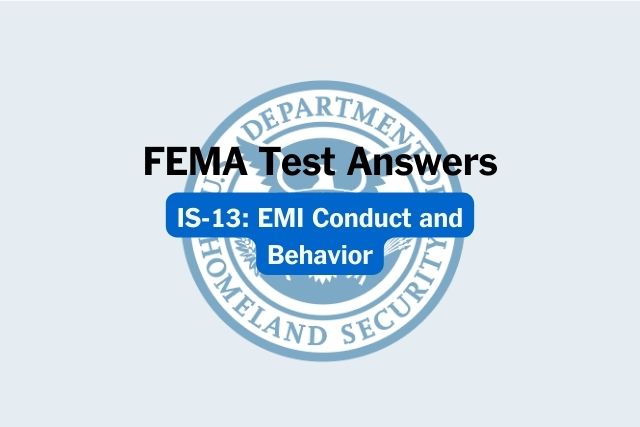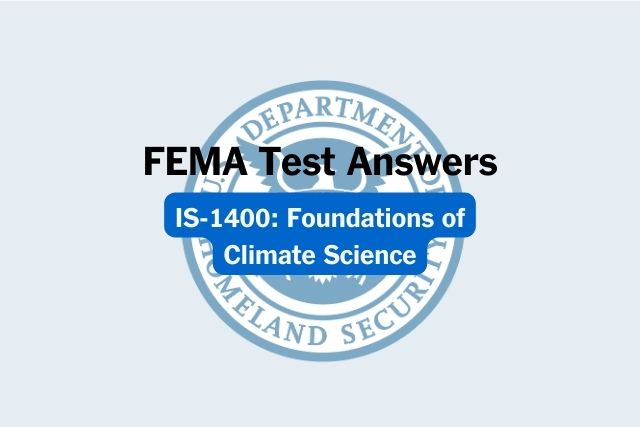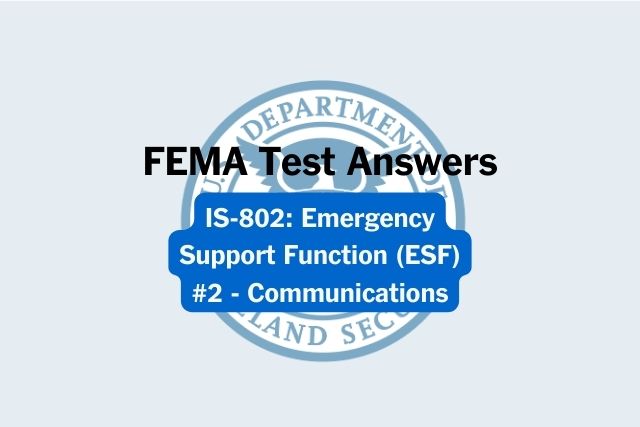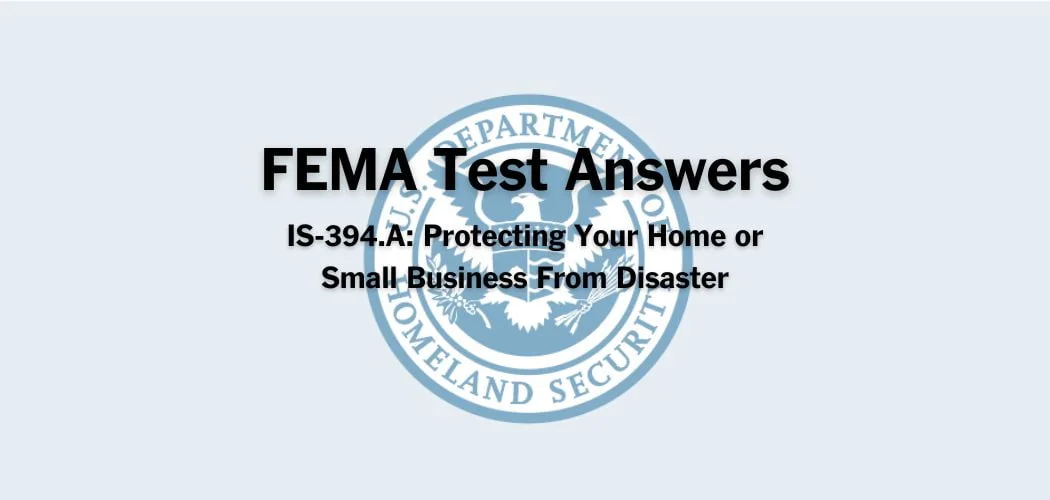Overview: The FEMA IS-320 course was published on 10/31/2013 to train Hazard Mitigation Advisor Specialists to effectively explain both the wildfire hazard and how to mitigate future damages effectively to people affected by wildfires.
NOTE: Each time the IS-320 final exam is loaded, you will receive a unique set of questions and answers. The test questions are scrambled to protect the integrity of the exam.
FEMA IS-320 test answers
Question 1. Of the online FEMA-partner organizations below, which one would you recommend to the public?
A. Federal Alliance for Safe Homes
B. The Firewise Communities Program
C. Institute for Business and Home Safety
D. All of the above.✅
Question 2. Which of the following lists contains only fire-resistant construction items?
A. Double-paned windows, brick exterior, vinyl soffits, and class-A roofing material
B. Attic vents boxed in with non-combustible material, wood siding exterior, and tempered exterior glass windows and doors
C. Double paned and tempered exterior glass windows, grade A roofing materials, brick exterior walls, spark arrestors on chimney, and fireproof screening for crawlspaces✅
D. Wood shingles, spark arrestor for chimney, and stucco exterior walls
E. Class A roofing material, fireproof screening for crawlspaces, vinyl siding, and tempered glass windows/doors
Question 3. Zone 3 is a natural area, so there is no need to take any action to create a defensible space.
A. TRUE
B. FALSE✅
Question 4. In wildfire mitigation, the term “convection” refers to columns of rising hot air and sinking cold air.
A. TRUE✅
B. FALSE
Question 5. After a wildfire, adjacent areas at lower elevations may be vulnerable to flooding.
A. TRUE✅
B. FALSE
Question 6. Which of the following has the highest potential for fueling and spreading a wildfire?
A. A structure located downhill from a fire
B. Hot and humid weather
C. Dead vegetation✅
D. Brick home exterior
Question 7. Building officials reinforce to the public the importance of using licensed professionals for structural repairs or mitigation.
A. TRUE✅
B. FALSE
Question 8. Firebrands ignite areas only immediately adjacent to the flames.
A. TRUE
B. FALSE✅
Question 9. Topography, humidity, and the proximity of structures all affect the rate at which a wildfire spreads.
A. TRUE✅
B. FALSE
Question 10. Why is it important to direct members of the public to local building officials before they begin the process of repairing or rebuilding?
A. FEMA wants to avoid liability for making incorrect recommendations.
B. Building officials will force citizens to use licensed professionals to do the repairs.-
C. Their community may have a floodplain ordinance, a building code, and/or other requirements.✅
D. None of the above.
Question 11. Fireproof screening is only recommended for crawlspace vents, not for attic vents or chimney caps.
A. TRUE
B. FALSE✅
Question 12. Which action is the BEST one to take when advising the public about wildfire mitigation?
A. Offer all FEMA publications that give instructions for rebuilding after a wildfire.
B. Google “rebuilding homes after wildfires” and provide a list of websites.
C. Refer to appropriate FEMA-approved publications and websites, and recommend speaking with local building officials.
D. Explain mitigation techniques from your own experience in the woods.
E. All of the above.✅
Question 13. One of the best resources to recommend to the public for wildfire mitigation is the Hazard Mitigation Disaster Workforce Website.
A. TRUE✅
B. FALSE
Question 14. Which mitigation actions should be recommended to reduce risk of flooding after a wildfire?
A. Till soil to increase absorbency.
B. Build retaining walls.
C. Plant ground cover on slopes and vegetation in burnt areas.
D. Purchase flood insurance to minimize future financial risk.
E. All of the above.✅
Question 15. If you are asked to recommend a publication that explains how to determine if a house is at risk from a wildfire, you should recommend the FEMA fact sheet “Wildfires.”
A. TRUE✅
B. FALSE
Question 16. Which organization(s) partner with FEMA to provide user-friendly information and guidance on wildfire mitigation?
A. FLASH
B. IBHS
C. Firewise Communities
D. All of the above✅
E. None of the above
Question 17. Which publication would you recommend to a member of the public looking for “best practices” for wildfire mitigation?
A. At Home in the Woods✅
B. FEMA Fact Sheet: Wildfires (FEMA-564)
C. Rebuilding After a Wildfire
D. Home Builder’s Guild to Construction in Wildfire Zones (FEMA P-737)
Question 18. Which of the following describes mitigation measures to create defensible space in Zone 1?
A. Remove combustible litter on roofs and gutters and trim tree branches that overhang the roof and chimney.✅
B. Plant trees 3 feet away from the structure.
C. Place flammable chemicals in a shed at the edge of this zone.
D. Locate shrubs away from the drip line of the structure’s roof.
Question 19. Which of the following statements is true about creating defensible space in Zone 2?
A. Mitigation measures in this zone begin approximately 30 feet from the structure in all directions.
B. Trees should be planted at least 10 feet apart.
C. An irrigation system or hose(s) long enough to reach this area should be available.
D. Trees should be planted as far away from the structure as they will be tall at maturity.
E. All of the above✅
Other Hazard Mitigation answers
This module is one in a series of Independent Study modules for the Hazard Mitigation disaster workforce, which addresses appropriate basic mitigation information for public consumption regarding earthquakes, floods, hurricanes, tornados, and wildfires.



